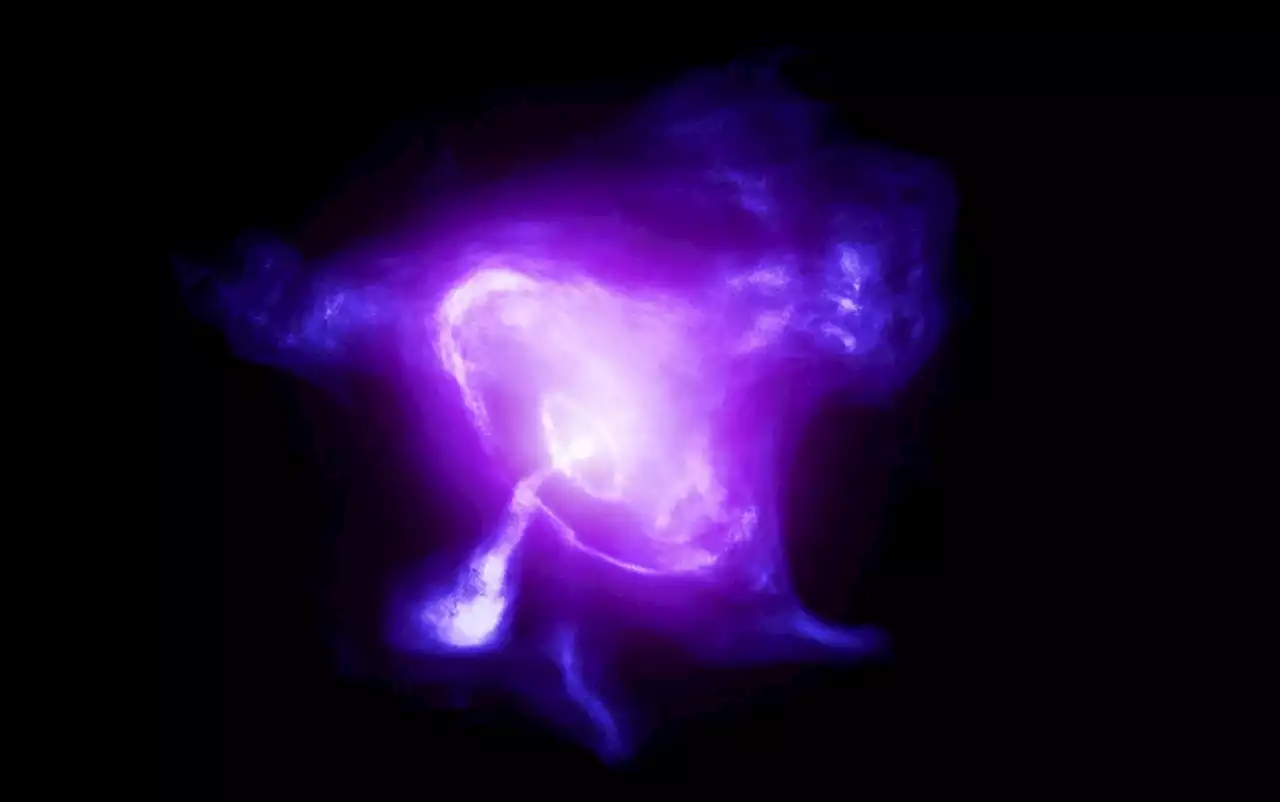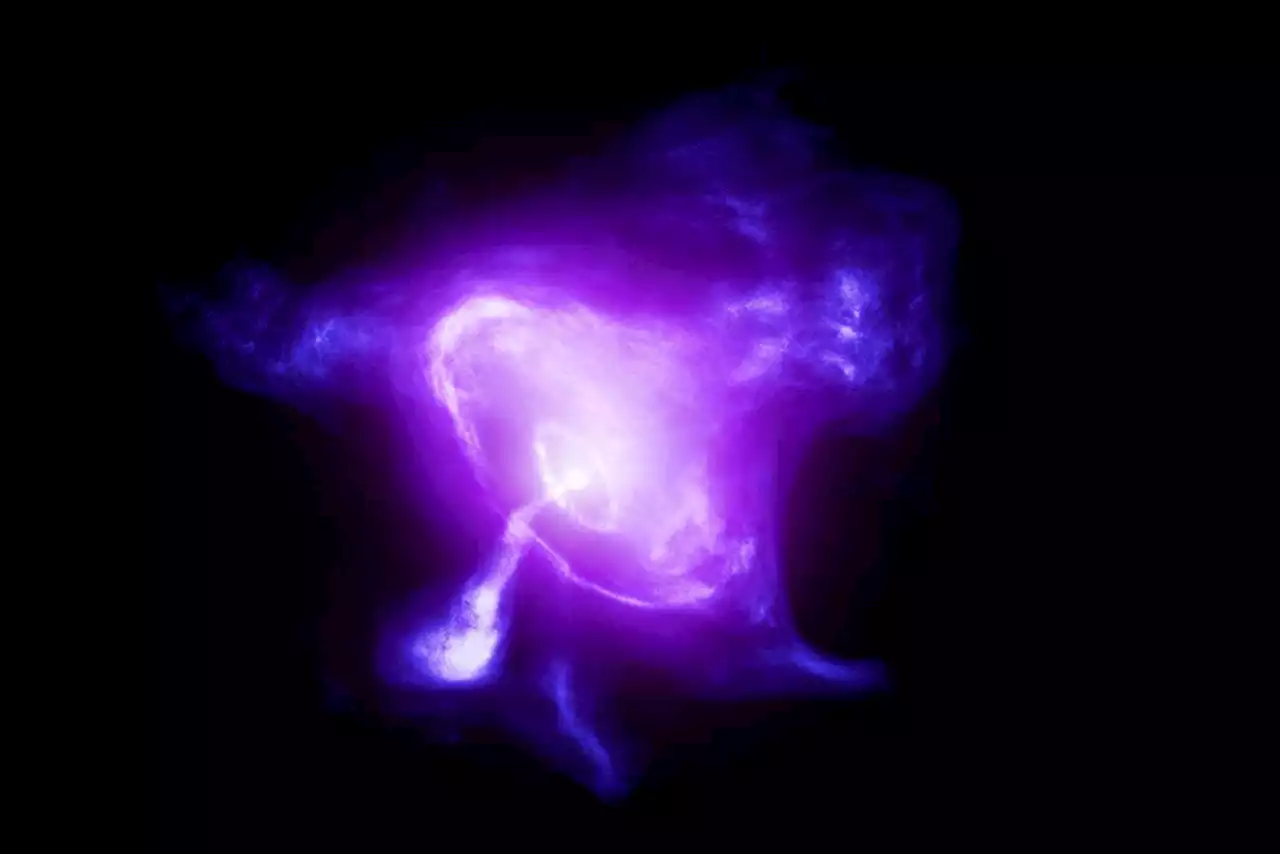The Crab nebula’s magnetic field has been mapped in more detail than ever before – and it's full of turbulence
, is extraordinarily chaotic because of the pulsar’s powerful magnetic field, extreme spin and the high-energy radiation it blasts out. Because of the general pandemonium in pulsar wind nebulae, they are not well understood, but the IXPE images helped to unravel the Crab pulsar’s surroundings.Voyage across the galaxy and beyond with our space newsletter every month.
Researchers knew that the Crab nebula was complex, but it seems to be even more complicated than expected, most likely because of the turbulent patches that are difficult to explain and even harder to simulate. New will have to take these X-ray measurements into account – and new observations will be needed to try to explain the turmoil at the heart of the nebula.
United States Latest News, United States Headlines
Similar News:You can also read news stories similar to this one that we have collected from other news sources.
 NASA's IXPE satellite sheds light on the Crab Nebula's magnetic fieldNASA's Imaging X-ray Polarimetry Explorer (IXPE) satellite captures detailed information about the mysterious Crab Nebula's magnetic field.
NASA's IXPE satellite sheds light on the Crab Nebula's magnetic fieldNASA's Imaging X-ray Polarimetry Explorer (IXPE) satellite captures detailed information about the mysterious Crab Nebula's magnetic field.
Read more »
 Simultaneous space and phase resolved X-ray polarimetry of the Crab Pulsar and NebulaThe Crab pulsar and its nebula are among the most studied astrophysical systems, and constitute one of the most promising environments where high energy processes and particle acceleration can be investigated. They are the only objects for which previous X-ray polarisation has been reported. We present here the first Imaging X-ray Polarimetry Explorer (IXPE) observation of the Crab pulsar and nebula. The total pulsar pulsed emission in the [2-8] keV energy range is unpolarised. Significant polarisation up to 15% is detected only in the core of the main peak. The nebula has a total space integrated polarised degree of 20% and polarisation angle of 145deg. The polarised maps show a large variation in the local polarisation, and regions with polarised degree up to 45-50%. The polarisation pattern suggests a predominantly toroidal magnetic field.
Simultaneous space and phase resolved X-ray polarimetry of the Crab Pulsar and NebulaThe Crab pulsar and its nebula are among the most studied astrophysical systems, and constitute one of the most promising environments where high energy processes and particle acceleration can be investigated. They are the only objects for which previous X-ray polarisation has been reported. We present here the first Imaging X-ray Polarimetry Explorer (IXPE) observation of the Crab pulsar and nebula. The total pulsar pulsed emission in the [2-8] keV energy range is unpolarised. Significant polarisation up to 15% is detected only in the core of the main peak. The nebula has a total space integrated polarised degree of 20% and polarisation angle of 145deg. The polarised maps show a large variation in the local polarisation, and regions with polarised degree up to 45-50%. The polarisation pattern suggests a predominantly toroidal magnetic field.
Read more »
 From Sounding Rockets to Satellites: The 50-Year Journey To Map the Crab Nebula’s Magnetic FieldNASA's IXPE has created a detailed map of the Crab Nebula's magnetic field, revealing its complex geometry and turbulence, and refining the angle of polarization across the object. The findings suggest X-rays originate in the outer magnetic field region, or 'wind' region. On February 22, 1971, a
From Sounding Rockets to Satellites: The 50-Year Journey To Map the Crab Nebula’s Magnetic FieldNASA's IXPE has created a detailed map of the Crab Nebula's magnetic field, revealing its complex geometry and turbulence, and refining the angle of polarization across the object. The findings suggest X-rays originate in the outer magnetic field region, or 'wind' region. On February 22, 1971, a
Read more »
 NASA's IXPE satellite sheds light on the Crab Nebula's magnetic fieldNASA's Imaging X-ray Polarimetry Explorer (IXPE) satellite captures detailed information about the mysterious Crab Nebula's magnetic field.
NASA's IXPE satellite sheds light on the Crab Nebula's magnetic fieldNASA's Imaging X-ray Polarimetry Explorer (IXPE) satellite captures detailed information about the mysterious Crab Nebula's magnetic field.
Read more »
 Simultaneous space and phase resolved X-ray polarimetry of the Crab Pulsar and NebulaThe Crab pulsar and its nebula are among the most studied astrophysical systems, and constitute one of the most promising environments where high energy processes and particle acceleration can be investigated. They are the only objects for which previous X-ray polarisation has been reported. We present here the first Imaging X-ray Polarimetry Explorer (IXPE) observation of the Crab pulsar and nebula. The total pulsar pulsed emission in the [2-8] keV energy range is unpolarised. Significant polarisation up to 15% is detected only in the core of the main peak. The nebula has a total space integrated polarised degree of 20% and polarisation angle of 145deg. The polarised maps show a large variation in the local polarisation, and regions with polarised degree up to 45-50%. The polarisation pattern suggests a predominantly toroidal magnetic field.
Simultaneous space and phase resolved X-ray polarimetry of the Crab Pulsar and NebulaThe Crab pulsar and its nebula are among the most studied astrophysical systems, and constitute one of the most promising environments where high energy processes and particle acceleration can be investigated. They are the only objects for which previous X-ray polarisation has been reported. We present here the first Imaging X-ray Polarimetry Explorer (IXPE) observation of the Crab pulsar and nebula. The total pulsar pulsed emission in the [2-8] keV energy range is unpolarised. Significant polarisation up to 15% is detected only in the core of the main peak. The nebula has a total space integrated polarised degree of 20% and polarisation angle of 145deg. The polarised maps show a large variation in the local polarisation, and regions with polarised degree up to 45-50%. The polarisation pattern suggests a predominantly toroidal magnetic field.
Read more »
 From Sounding Rockets to Satellites: The 50-Year Journey To Map the Crab Nebula’s Magnetic FieldNASA's IXPE has created a detailed map of the Crab Nebula's magnetic field, revealing its complex geometry and turbulence, and refining the angle of polarization across the object. The findings suggest X-rays originate in the outer magnetic field region, or 'wind' region. On February 22, 1971, a
From Sounding Rockets to Satellites: The 50-Year Journey To Map the Crab Nebula’s Magnetic FieldNASA's IXPE has created a detailed map of the Crab Nebula's magnetic field, revealing its complex geometry and turbulence, and refining the angle of polarization across the object. The findings suggest X-rays originate in the outer magnetic field region, or 'wind' region. On February 22, 1971, a
Read more »
